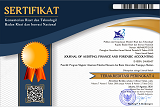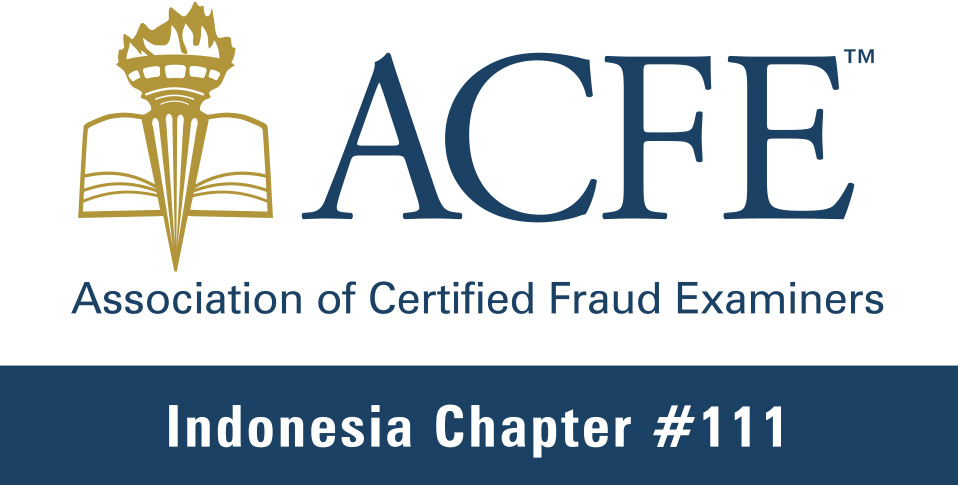Over Confidence, Mental Accounting, and Loss Aversion In Investment Decision
Abstract
Keywords
Full Text:
PDFReferences
Ackert, L., & Deaves, R. (2010). Behavioral Finance: Psychology, Decision-Making, and Markets. Cengage Learning: South-Western, USA.
Aziz, B., & Khan, M. A. (2016). Behavioral Factors Influencing Individual Investor’s Investment Decision and Performance, Evidence from Pakistan Stock Exchange. International Journal of Research in Finance and Marketing (IJRFM), 6(7).
Baker, H. K., & Nofsinger, J. R. (2011). Behavioral Finance: Investors, Corporations, and Markets. In Behavioral Finance: Investors, Corporations, and Markets. https://doi.org/10.1002/9781118258415
Chen, G., Kim, K. A., Nofsinger, J. R., & Rui, O. M. (2007). Trading performance, disposition effect, overconfidence, representativeness bias, and experience of emerging market investors. Journal of Behavioral Decision Making. https://doi.org/10.1002/bdm.561
Cherono, I., Olweny, T., & Nasieku, T. (2019). Investor Behavior Biases and Stock Market Reaction in Kenya. Journal of Applied Finance & Banking, 9(1).
Chinn, W. W. (1998). The Partial Least Squares Approach to Structural Equation Modelling. Modern Methods for Business Research.
Combrink, S., & Lew, C. (2020). Potential Underdog Bias, Overconfidence and Risk Propensity in Investor Decision-Making Behavior. Journal of Behavioral Finance, 21(4). https://doi.org/10.1080/15427560.2019.1692843
Engelhardt, G. V. (2003). Nominal loss aversion, housing equity constraints, and household mobility: Evidence from the United States. In Journal of Urban Economics (Vol. 53, Issue 1). https://doi.org/10.1016/S0094-1190(02)00511-9
Ghozali, I. (2014). Structural Equation Modeling, Metode Alternatif dengan Partial Least Square (PLS). Badan Penerbit Universitas Diponegoro.
Haigh, M. S., & List, J. A. (2005). Do professional traders exhibit myopic loss aversion? an experimental analysis. In Journal of Finance (Vol. 60, Issue 1). https://doi.org/10.1111/j.1540-6261.2005.00737.x
Hair Jr., J. F., Matthews, L. M., Matthews, R. L., & Sarstedt, M. (2017). PLS-SEM or CB-SEM: updated guidelines on which method to use. International Journal of Multivariate Data Analysis, 1(2), 107. https://doi.org/10.1504/ijmda.2017.10008574
Hermuningsih, S. (2012). Pengantar Pasar Modal Indonesia. UPP STIM YKPN. Yogyakarta.
Hunguru, P., Sibanda, V., & Tadu, R. (2020). Determinants of Investment Decisions: A Study of Individual Investors on the Zimbabwe Stock Exchange. Applied Economics and Finance, 7(5). https://doi.org/10.11114/aef.v7i5.4927
Hwang, H., & Takane, Y. (2004). Generalized structured component analysis. Psychometrika. https://doi.org/10.1007/BF02295841
Isidore R, R., & Christie, P. (2019). The relationship between the income and behavioural biases. Journal of Economics, Finance and Administrative Science, 24(47). https://doi.org/10.1108/JEFAS-10-2018-0111
Jain, J., Walia, N., & Gupta, S. (2019). Evaluation of behavioral biases affecting investment decision making of individual equity investors by fuzzy analytic hierarchy process. Review of Behavioral Finance, 12(3). https://doi.org/10.1108/RBF-03-2019-0044
Kahneman, D., Knetsch, J. L., & Thaler, R. H. (1990). Experimental Tests of the Endowment Effect and the Coase Theorem Author Experimental Tests of the Endowment Effect and the Coase Theorem. In Source: The Journal of Political Economy (Vol. 98, Issue 6).
Kahneman, D., & Tversky, A. (1979). Prospect Theory - An Analysis Of Decision Under Risk.pdf. In Econometrica.
Knetsch, J. L. (2019). The endowment effect and evidence of nonreversible indifference curves. In Choices, Values, and Frames. https://doi.org/10.1017/CBO9780511803475.010
Köbberling, V., & Wakker, P. P. (2005). An index of loss aversion. Journal of Economic Theory, 122(1). https://doi.org/10.1016/j.jet.2004.03.009
Kusumawati, M. (2013). Faktor Demografi, Economic Factors dan Behavioral Motivation Dalam Pertimbangan Keputusan Investasi Di Surabaya. Finesta, 1(2).
Lusardi, A., & Mitchell, O. S. (2011). Financial literacy around the world: An overview. Journal of Pension Economics and Finance. https://doi.org/10.1017/S1474747211000448
Lutfi, L. (2011). The Relationship Between Demographic Factors And Investment Decision In Surabaya. Journal of Economics, Business, and Accountancy | Ventura. https://doi.org/10.14414/jebav.v13i3.13
Monecke, A., & Leisch, F. (2012). SemPLS: Structural equation modeling using partial least squares. Journal of Statistical Software. https://doi.org/10.18637/jss.v048.i03
Nofsinger, J. R., & Nofsinger, J. R. (2018). Mental Accounting. In The Psychology of Investing. https://doi.org/10.4324/9781315230856-6
Pikulina, E., Renneboog, L., & Tobler, P. N. (2017). Overconfidence and investment: An experimental approach. Journal of Corporate Finance, 43. https://doi.org/10.1016/j.jcorpfin.2017.01.002
Puspitaningtyas, Z. (2013). Perilaku Investor Dalam Pengambilan Keputusan Investasi Di Pasar MODAL. Jurnal Akuntansi Universitas Jember.
S Hallale, P., & Gadekar, M. (2019). A Study of Behavioural Factors Affecting Individual Investment Decisions. International Journal of Trend in Scientific Research and Development, 3(6), 298–311. https://www.ijtsrd.com/papers/ijtsrd28100.pdf%0Ahttps://www.ijtsrd.com/management/business-economics/28100/a-study-of-behavioural-factors-affecting-individual-investment-decisions/pawankumar-s-hallale
Samuelson, W., & Zeckhauser, R. (1988). Status quo bias in decision making. Journal of Risk and Uncertainty. https://doi.org/10.1007/BF00055564
Schmidt, U., & Zank, H. (2005). What is loss aversion? Journal of Risk and Uncertainty, 30(2). https://doi.org/10.1007/s11166-005-6564-6
Seiler, M. J., & Seiler, V. L. (2010). Mitigating Investor Risk-Seeking Behavior in a Down Real Estate Market. Journal of Behavioral Finance, 11(3). https://doi.org/10.1080/15427560.2010.507166
Tandelilin, E. (2010). Portofolio dan Investasi Teori dan Aplikasi. In E-jurnal Manajemen.
Tandiontong, M., & Rusdin. (2015). Komparasi Capital Asset Pricing Model Versus Arbitrage Pricing Theory Model atas Volatilitas Return Saham. Jurnal Keuangan Dan Perbankan.
Thaler, R. (1980). Toward a positive theory of consumer choice. Journal of Economic Behavior and Organization, 1(1). https://doi.org/10.1016/0167-2681(80)90051-7
Thaler, R. H. (2011). Mental accounting matters. In Advances in Behavioral Economics. https://doi.org/10.2307/j.ctvcm4j8j.8
Thaler, R. H., & Shefrin, H. M. (1981). An Economic Theory of Self-Control. Journal of Political Economy, 89(2). https://doi.org/10.1086/260971
Tversky, A., & Kahneman, D. (1991). Loss Aversion in Riskless Choice: A Reference-Dependent Model. The Quarterly Journal of Economics. https://doi.org/10.2307/2937956
Verhofen, M. (2014). Finance. https://doi.org/http://dx.doi.org/10.2139/ssrn.2415741
Wulandari, D. A., & Iramani, R. (2014). Studi Experienced Regret, Risk Tolerance, Overconfidance Dan Risk Perception Pada Pengambilan Keputusan Investasi. Journal of Business and Banking. https://doi.org/10.14414/jbb.v4i1.293
DOI: https://doi.org/10.21107/jaffa.v9i1.10523
Refbacks
- There are currently no refbacks.
Our Journal indexed by:
Our support tools using:



This work is licensed under a Creative Commons Attribution 4.0 International License.












